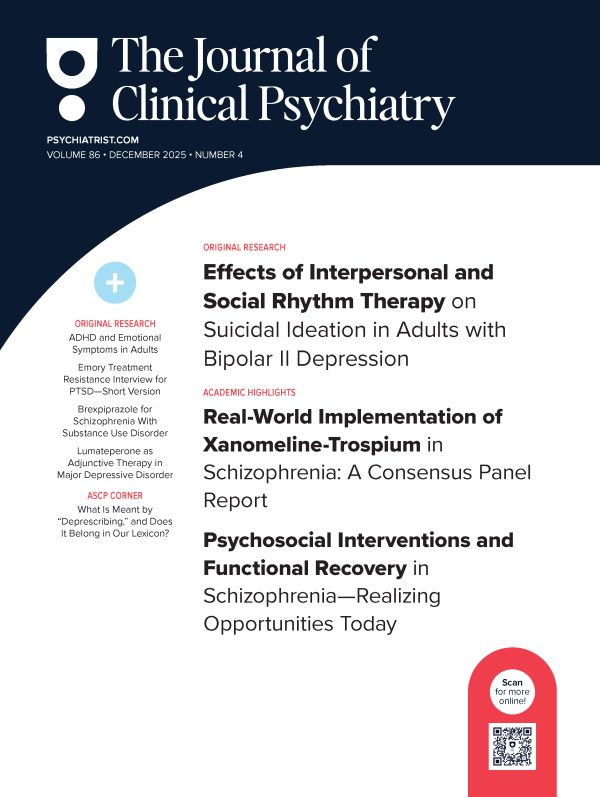Objective: To determine the prevalence, trends, and factors associated with antipsychotic polypharmacy categorized according to type of antipsychotic and duration of use and to contrast usage patterns with published treatment guidelines.
Method: A retrospective cohort study was designed, and Medicaid recipients >= 16 years of age with a schizophrenia diagnosis (ICD-9-CM =295.xx) between 1998 and 2000 were identified from the California (20% random sample) and Georgia Medicaid claims databases. Use of antipsychotic polypharmacy was categorized based on duration (long-term polypharmacy was defined as lasting > 2 months), and long-term use was further categorized based on type of antipsychotic combinations (clozapine, conventional, and atypical). The prevalence, mean duration, and frequency of and yearwise trends in antipsychotic polypharmacy were estimated. A stepwise logistic variable selection procedure was used to identify factors associated with long-term antipsychotic polypharmacy.
Results: Of a total of 31,435 persons with schizophrenia, the 1998-2000 prevalence of antipsychotic polypharmacy was 40% (N = 12,549; mean age = 43 years; white, 47%; female, 48%; mean duration of polypharmacy = 149 days), and long-term antipsychotic polypharmacy prevalence was 23% (N = 7222, mean duration = 236 days). The prevalence of atypical antipsychotic polypharmacy increased between 1998 and 2000 (p < .0001). Use of newer atypicals such as quetiapine (OR = 18.32) and older conventionals such as chlorpromazine (OR = 28.87) was strongly associated with long-term antipsychotic polypharmacy.
Conclusion: Antipsychotic polypharmacy is widely prevalent, is prescribed for long durations, and is an increasing phenomenon among Medicaid-eligible schizophrenia patients, indicating a significant discrepancy with treatment guidelines (which do not advocate the use of any polypharmacy except for short-term periods when transitioning patients to new antipsychotics). Further research evaluating the effects of antipsychotic polypharmacy in schizophrenia patients may assist in defining the scope and potential of such use.
Please sign in or purchase this PDF for $40.00.





